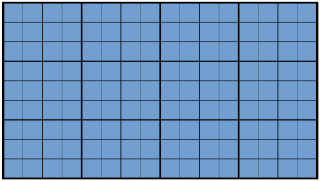
Digital video is an electronic representation of moving visual images (video) in the form of encoded digital data. This is in contrast to analog video, which represents moving visual images in the form of analog signals. Digital video comprises a series of digital images displayed in rapid succession, usually at 24 frames per second. Digital video has many advantages such as easy copying, multicasting, sharing and storage.

Letterboxing is the practice of transferring film shot in a widescreen aspect ratio to standard-width video formats while preserving the film's original aspect ratio. The resulting videographic image has mattes above and below it; these mattes are part of each frame of the video signal. LBX and LTBX are identifying abbreviations for films and images thus formatted.

MPEG-2 is a standard for "the generic coding of moving pictures and associated audio information". It describes a combination of lossy video compression and lossy audio data compression methods, which permit storage and transmission of movies using currently available storage media and transmission bandwidth. While MPEG-2 is not as efficient as newer standards such as H.264/AVC and H.265/HEVC, backwards compatibility with existing hardware and software means it is still widely used, for example in over-the-air digital television broadcasting and in the DVD-Video standard.

Standard-definition television is a television system which uses a resolution that is not considered to be either high or enhanced definition. "Standard" refers to offering a similar resolution to the analog broadcast systems used when it was introduced.

Video is an electronic medium for the recording, copying, playback, broadcasting, and display of moving visual media. Video was first developed for mechanical television systems, which were quickly replaced by cathode-ray tube (CRT) systems which, in turn, were replaced by flat panel displays of several types.

Digital Video Broadcasting (DVB) is a set of international open standards for digital television. DVB standards are maintained by the DVB Project, an international industry consortium, and are published by a Joint Technical Committee (JTC) of the European Telecommunications Standards Institute (ETSI), European Committee for Electrotechnical Standardization (CENELEC) and European Broadcasting Union (EBU).
DVB-T, short for Digital Video Broadcasting – Terrestrial, is the DVB European-based consortium standard for the broadcast transmission of digital terrestrial television that was first published in 1997 and first broadcast in Singapore in February, 1998. This system transmits compressed digital audio, digital video and other data in an MPEG transport stream, using coded orthogonal frequency-division multiplexing modulation. It is also the format widely used worldwide for Electronic News Gathering for transmission of video and audio from a mobile newsgathering vehicle to a central receive point. It is also used in the US by Amateur television operators.

Serial digital interface (SDI) is a family of digital video interfaces first standardized by SMPTE in 1989. For example, ITU-R BT.656 and SMPTE 259M define digital video interfaces used for broadcast-grade video. A related standard, known as high-definition serial digital interface (HD-SDI), is standardized in SMPTE 292M; this provides a nominal data rate of 1.485 Gbit/s.
Anamorphic widescreen is a process by which a comparatively wide widescreen image is horizontally compressed to fit into a storage medium with a narrower aspect ratio, reducing the horizontal resolution of the image while keeping its full original vertical resolution. Compatible play-back equipment can then expand the horizontal dimension to show the original widescreen image. This is typically used to allow one to store widescreen images on a medium that was originally intended for a narrower ratio, while using as much of the frame – and therefore recording as much detail – as possible.

16:9 is a widescreen aspect ratio with a width of 16 units and height of 9 units.
PALplus is an analogue television broadcasting system aimed to improve and enhance the PAL format by allowing 16:9 aspect ratio broadcasts, while remaining compatible with existing television receivers, defined by ITU recommendation BT.1197-1. Introduced in 1993, it followed experiences with the HD-MAC and D2-MAC, hybrid analogue-digital widescreen formats that were incompatible with PAL receivers. It was developed at the University of Dortmund in Germany, in cooperation with German terrestrial broadcasters and European and Japanese manufacturers. The system had some adoption across Europe during the late 1990s and helped introduce widescreen TVs in the market, but never became mainstream.
In television technology, Wide Screen Signaling (WSS) is digital metadata embedded in invisible part of the analog TV signal describing qualities of the broadcast, in particular the intended aspect ratio of the image. This allows television broadcasters to enable both 4:3 and 16:9 television sets to optimally present pictures transmitted in either format, by displaying them in full screen, letterbox, widescreen, pillar-box, zoomed letterbox, etc.
HD-MAC was a broadcast television standard proposed by the European Commission in 1986, as part of Eureka 95 project. It belongs to the MAC - Multiplexed Analogue Components standard family. It is an early attempt by the EEC to provide High-definition television (HDTV) in Europe. It is a complex mix of analogue signal, multiplexed with digital sound, and assistance data for decoding (DATV). The video signal was encoded with a modified D2-MAC encoder.

1080p is a set of HDTV high-definition video modes characterized by 1,920 pixels displayed across the screen horizontally and 1,080 pixels down the screen vertically; the p stands for progressive scan, i.e. non-interlaced. The term usually assumes a widescreen aspect ratio of 16:9, implying a resolution of 2.1 megapixels. It is often marketed as Full HD or FHD, to contrast 1080p with 720p resolution screens. Although 1080p is sometimes informally referred to as 2K, these terms reflect two distinct technical standards, with differences including resolution and aspect ratio.

A video scaler is a system which converts video signals from one display resolution to another; typically, scalers are used to convert a signal from a lower resolution to a higher resolution, a process known as "upconversion" or "upscaling".

The pillarbox effect occurs in widescreen video displays when black bars are placed on the sides of the image. It becomes necessary when film or video that was not originally designed for widescreen is shown on a widescreen display, or a narrower widescreen image is displayed within a wider aspect ratio, such as a 16:9 image in a 2.39:1 frame. The original material is shrunk and placed in the middle of the widescreen frame.
High-definition television describes a television system which provides a substantially higher image resolution than the previous generation of technologies. The term has been used since 1936; in more recent times, it refers to the generation following standard-definition television (SDTV), often abbreviated to HDTV or HD-TV. It is the current de facto standard video format used in most broadcasts: terrestrial broadcast television, cable television, satellite television and Blu-ray Discs.
The aspect ratio of an image is the ratio of its width to its height, and is expressed with two numbers separated by a colon, such as 16:9, sixteen-to-nine. For the x:y aspect ratio, the image is x units wide and y units high. Common aspect ratios are 1.85:1 and 2.39:1 in cinematography, 4:3 and 16:9 in television photography, and 3:2 in still photography.
High-dynamic-range television is a technology that improves the quality of display signals. It is contrasted with the retroactively-named standard dynamic range (SDR). HDR changes the way the luminance and colors of videos and images are represented in the signal, and allows brighter and more detailed highlight representation, darker and more-detailed shadows, and a wider array of more intense colors.










